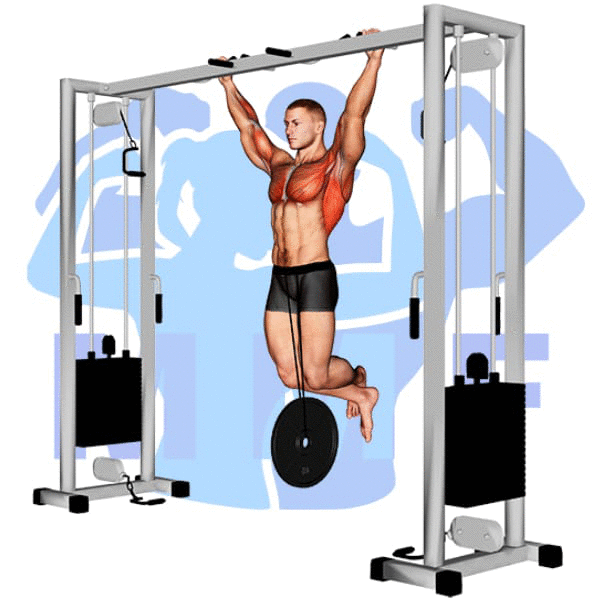The standing calf raise machine is one of the most productive calf building exercises in the gym. It is the perfect exercise for not only serious bodybuilders but anyone who is looking to develop picture perfect diamond-shaped calves.
Standing Calf Raise Summary
- Primary Muscles Worked: Calves (Gastrocnemius)
- Other Muscles (Secondary) Worked: None
- Equipment: Standing Calf Raise Machine
- Mechanics Type: Isolation
- Force: Push
- Utility: Basic
How to Properly Use The Standing Calf Raise Machine
- Stand with your toes and balls of your feet on the platform and your heels hanging off the end of the platform.
- Put your shoulders under the pads and straighten your legs, lifting the weight clear of the support.
- Keeping your legs straight, while inhaling slowly lower your heels and weight as far as possible, pause and absorb the stretch into the calf.
- Rise up on your toes as far as possible while exhaling, hold the contraction briefly then lower to the starting position.
- Repeat.

Muscles Used For The Standing Calf Raise Machine
Target (Agonist) Muscles
- Calves (Gastrocnemius)
Synergist Muscles
- Soleus
Stabilizers Muscles
- Trapezius, Upper
- Trapezius, Middle
- Levator Scapulae
Antagonist Stabilizers
- Tibialis Anterior
- Extensor Digitorum Longus
Tips for Better Results and Proper From
If you want the best results and to look and feel like an expert when performing standing calf raises, make sure you follow all these tips. You will get faster results with a smaller chance of injury.
- Begin with a lightweight to practice proper form and control.
- Keep your legs locked but not your knees. By keeping your knees slightly bent during the exercise, it will keep the emphasis on your calves. Remember not to use your quads by bending and straightening your leg.
- Use the full range of motion. The key to great form is to get a full range of motion and flexing at the top of the movement.
- Full stretch. A full stretch at the bottom of the movement will stretch the calves and allow more blood to enter and ready them for the lift.
- Pause at the top and bottom. If you are not trying to build rebound strength, but instead bigger calves then you should pause at the top and bottom. If you are trying to build rebound strength then bounce away.
Common Errors While Performing Machine Standing Calf Raises
- Using too much weight. A common mistake many novice lifters are using too much weight and not being able to complete the full range of motion.
- Not keeping your legs lock. If you bend and straighten your legs, you take the emphasis off your calves.
- Not using the full range of motion. The result will be less effective in the development of the calves.
- Performing the movement too fast. Performing the action too quickly doesn’t allow you to recruit as many muscle fibers fully.
Caution Needed Performing Standing Calf Raises
If you have any knee, ankle, or lower back problems, avoid this exercise. If you have an Achilles tendon problem or surgery, check with your doctor first before performing this exercise. Stretch before starting this exercise. One example, complete the movement a few times before adding weight.
Variations For Using the Standing Calf Raise Machine
You can vary the part of your calves that are being worked by changing your foot position. For example, pointing your toes in will work the outer part of your calves more. Subsequently, if you point your feet out you will work your outer calves more.
Additional Exercises that Target the Same Muscle Groups
The following exercises can be performed instead of using the standing calf raise machine.
When To Work Your Calves
Many people overwork their calves, forearms, and abs. These three muscle groups are used continuously in your daily life and as such, they have a lot of slow-twitch muscle fibers. To understand the difference between slow-twitch and fast-twitch muscle read this article. The bottom line is you should work your calves as often as you work any other muscle and no more frequently. Performing heavy resistance training will build you type II muscle fibers the same as other resistance training.




